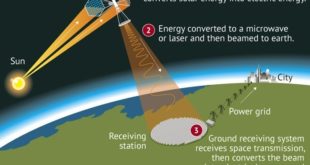Introduction: The Department of Defense recently released its annual report on “Military and Security Developments Involving the People’s Republic of China,” offering crucial insights into the evolving landscape of China’s military capabilities and strategic ambitions. This congressionally mandated report serves as a significant barometer of China’s military growth, highlighting growing …
Read More »TimeLine Layout
May, 2024
-
17 May
Revolutionizing Aerospace and Defense: The Power of High-Performance Connectors
The battlefield is a demanding environment. Aerospace and defense applications require robust and reliable communication systems that can withstand harsh conditions, intense vibration, and extreme temperatures. In the dynamic world of aerospace and defense, where reliability is not just a preference but a necessity, the significance of robust and dependable …
Read More » -
17 May
Navigating the Future: Trends and Insights in Network Management
Introduction: In the fast-paced digital landscape, where connectivity is the heartbeat of modern enterprises, effective network management plays a pivotal role in ensuring seamless operations. The ever-evolving technological landscape, coupled with the increasing demand for robust connectivity, has given rise to several trends shaping the network management market. In this …
Read More » -
16 May
Unveiling the Depths: Tunnel Warfare Emerges as a New Frontier in Modern Conflict
Introduction: In the ever-evolving landscape of modern warfare, a new and formidable threat has emerged – Tunnel Warfare. Gone are the days when conflicts were fought solely on open battlefields; today, the battleground extends beneath the Earth’s surface, presenting unique challenges and opportunities for military strategists. As nations grapple with …
Read More » -
16 May
Revolutionizing Space Communications: Exploring the Potential of Spaceborne Optical Switching Technology
Introduction: In the vast expanse of space, communication plays a pivotal role in enabling seamless interactions between Earth and satellites or spacecraft. Traditional radio frequency (RF) communication has long been the go-to method for space-based communication. However, a new era is dawning with the emergence of spaceborne optical switching technology. …
Read More » -
15 May
Revolutionizing Disaster Response: The Role of Low-Bandwidth Remote Situational Awareness Communications Mesh Networks
Introduction: Disasters, whether natural or man-made, demand swift and effective response strategies. One of the biggest challenges in disaster response is establishing reliable communication networks, especially in remote or bandwidth-constrained areas. In recent years, the concept of low-bandwidth remote situational awareness communications mesh networks, powered by small radios, has emerged …
Read More » -
14 May
Advancing National Security: The Technological Frontier of Energetics Innovation
Introduction: In the ever-evolving landscape of national security, maintaining technological superiority is imperative. Recognizing this challenge, the United States has embarked on a pivotal strategic initiative: the National Energetics Plan. This visionary plan not only focuses on developing next-generation capabilities but also aims to fortify the resilience and adaptability of …
Read More » -
13 May
Paving the Way for a Lunar Economy: DARPA’s LOGIC Initiative Accelerates Commercial Lunar Infrastructure Standards
Introduction: As the world turns its gaze toward lunar exploration, the Defense Advanced Research Projects Agency (DARPA) is taking bold strides to ensure the development of a robust lunar economy. The Lunar Guidelines for Infrastructure Consortium (LOGIC) emerges as a pivotal initiative, aiming to establish interoperability standards for commercial lunar …
Read More » -
12 May
Revolutionizing the Battlefield: 3D Printing’s On-Demand Arsenal for the Modern Military
Introduction: In the ever-evolving landscape of modern warfare, technology is a key driver of innovation. Among the groundbreaking advancements, 3D printing has emerged as a game-changer, providing the military with unprecedented capabilities. 3D printing or additive manufacturing is ongoing revolution in manufacturing with its potential to fabricate any complex object …
Read More » -
11 May
Harnessing the Cosmos: Space-Based Solar Power Technology Breakthroughs Illuminate a Future of Unlimited Renewable Electricity
Introduction: In the quest for sustainable and efficient energy sources, scientists and engineers have set their sights on the cosmos, unlocking the potential of Space-Based Solar Power (SBSP or SSP). Recent breakthroughs in this revolutionary technology are paving the way for a new era in renewable energy, promising unlimited, clean …
Read More »
 International Defense Security & Technology Your trusted Source for News, Research and Analysis
International Defense Security & Technology Your trusted Source for News, Research and Analysis


